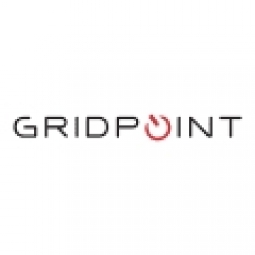Download PDF
Wendy's Chain Achieves 12% Energy Savings from IoT Implementation
Applicable Industries
- Equipment & Machinery
The Challenge
Raul Dominguez, a Wendy’s franchise owner in south Florida, was grappling with the escalating cost of energy. The need to manage energy use and operational expense was a pressing issue for Dominguez and other franchisees in the region. Quick-serve restaurants, especially those located in warm climates like South Florida, consume a significant amount of energy. These establishments face unique challenges, including high-temperature broilers and other cooking equipment that generate substantial heat, commercial-grade refrigeration for safe food storage, and robust HVAC systems to ensure a comfortable customer experience. Dominguez, along with several other Wendy’s franchise owners participating in a regional council, volunteered to test various energy management strategies to address energy consumption, manual system overrides, and equipment monitoring.
About The Customer
The customer in this case study is Raul Dominguez, a successful Wendy’s franchise owner in south Florida. He, along with other franchisees in the region, was struggling with the rising cost of energy, which was becoming a significant operational expense. Quick-serve restaurants like Wendy's, particularly those located in warm climates, consume a lot of energy due to their high-temperature cooking equipment, commercial-grade refrigeration, and robust HVAC systems. Dominguez, along with several other franchise owners, was part of a regional council that volunteered to test various energy management strategies to address these issues.
The Solution
The solution to the energy consumption problem was to test various energy management strategies. These strategies were aimed at addressing the high energy consumption, manual system overrides, and equipment monitoring. The strategies were tested by Dominguez and several other Wendy’s franchise owners who were part of a regional council. The goal was to find effective ways to reduce energy consumption and operational expenses. The strategies tested included optimizing the use of high-temperature broilers and other cooking equipment, improving the efficiency of commercial-grade refrigeration systems, and enhancing the performance of HVAC systems. The results of these tests were then reported back to the group for further analysis and implementation across the franchises.
Related Case Studies.

Case Study
Smart Water Filtration Systems
Before working with Ayla Networks, Ozner was already using cloud connectivity to identify and solve water-filtration system malfunctions as well as to monitor filter cartridges for replacements.But, in June 2015, Ozner executives talked with Ayla about how the company might further improve its water systems with IoT technology. They liked what they heard from Ayla, but the executives needed to be sure that Ayla’s Agile IoT Platform provided the security and reliability Ozner required.

Case Study
IoT enabled Fleet Management with MindSphere
In view of growing competition, Gämmerler had a strong need to remain competitive via process optimization, reliability and gentle handling of printed products, even at highest press speeds. In addition, a digitalization initiative also included developing a key differentiation via data-driven services offers.

Case Study
Predictive Maintenance for Industrial Chillers
For global leaders in the industrial chiller manufacturing, reliability of the entire production process is of the utmost importance. Chillers are refrigeration systems that produce ice water to provide cooling for a process or industrial application. One of those leaders sought a way to respond to asset performance issues, even before they occur. The intelligence to guarantee maximum reliability of cooling devices is embedded (pre-alarming). A pre-alarming phase means that the cooling device still works, but symptoms may appear, telling manufacturers that a failure is likely to occur in the near future. Chillers who are not internet connected at that moment, provide little insight in this pre-alarming phase.

Case Study
Premium Appliance Producer Innovates with Internet of Everything
Sub-Zero faced the largest product launch in the company’s history:It wanted to launch 60 new products as scheduled while simultaneously opening a new “greenfield” production facility, yet still adhering to stringent quality requirements and manage issues from new supply-chain partners. A the same time, it wanted to increase staff productivity time and collaboration while reducing travel and costs.

Case Study
Integration of PLC with IoT for Bosch Rexroth
The application arises from the need to monitor and anticipate the problems of one or more machines managed by a PLC. These problems, often resulting from the accumulation over time of small discrepancies, require, when they occur, ex post technical operations maintenance.

Case Study
Robot Saves Money and Time for US Custom Molding Company
Injection Technology (Itech) is a custom molder for a variety of clients that require precision plastic parts for such products as electric meter covers, dental appliance cases and spools. With 95 employees operating 23 molding machines in a 30,000 square foot plant, Itech wanted to reduce man hours and increase efficiency.





